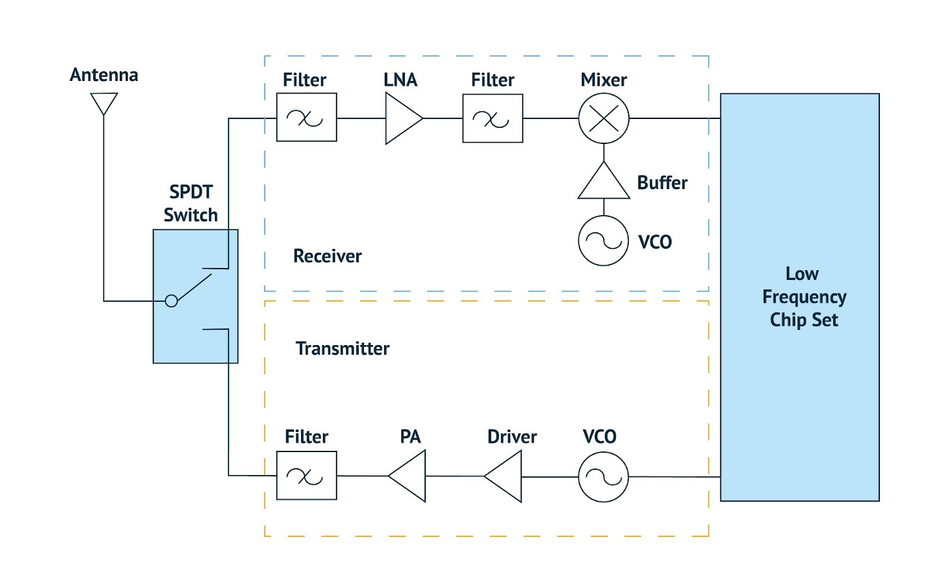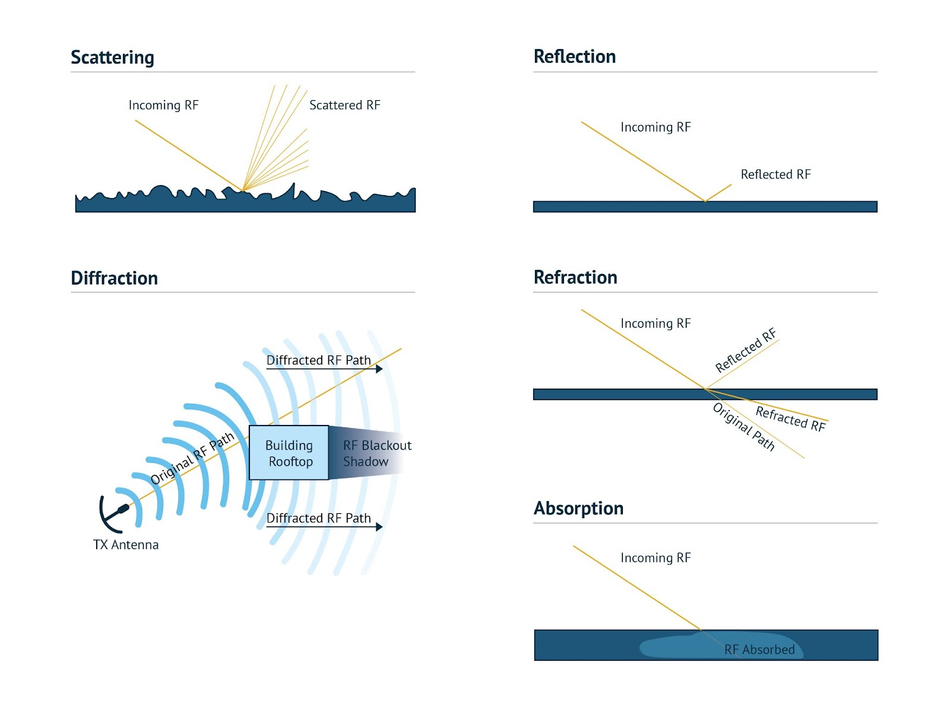Next-gen Wi-Fi applications and Solutions
Introducing the Next-Gen Wi-Fi Applications and Solutions Series: Dive into the world of cutting-edge wireless communication. This new series introduces and explains the developments in Wi-Fi, 5G, and other RF technologies.
This is the introductory article in a 6-part series featuring articles on Next-Gen Wi-Fi Applications and Solutions. The series focuses on the improvements Wi-Fi 6/6E and its applications bring to enhance the performance of the next-gen wireless networking devices. This series is sponsored by Mouser Electronics. Through the sponsorship, Mouser Electronics shares its passion for technologies that enable smarter connected applications.
The objective of communication systems is to transfer information from one point to another reliably and within an acceptable time delay. But in the modern world, these are just the bare minimum requirements. Users today expect communication systems to offer gigabit speeds at low latencies. The introductory article of this new series aims to make readers familiar with the foundational terms and ideas in the world of wireless communication.
The Electromagnetic Spectrum and Developments in RF Communication
Electromagnetic (EM) waves having a frequency between 3 kHz and 300 GHz all fall under the category of Radio Frequency (RF) signals. RF is probably the most popular and widely used means of communication via free space/wireless channels.
While EM waves with a very short wavelength (in nanometers) like X-rays and gamma-rays have the potential to cause damage, RF waves are rather safe and are not known to have any side effects on humans. RF enables wireless communication in computers, smartphones, tablets, televisions, and a huge number of Internet of Things (IoT) devices.
Guglielmo Marconi, an electrical engineer from Italy, was the first to prove the feasibility of wireless communication back in the late 1890s. Over the next couple of decades, as improvements were made in fabrication technology and large-scale circuit integration, RF equipment got smaller and more reliable. Contributions of various other scientists and engineers finally led RF communication to evolve from a rudimental messaging medium to a full-fledged high-speed data transmission medium.
Basics of RF communication
All signals generated in nature are continuous or analog. They tend to be lossy and hence unfit for transmission in their natural form. To transfer them from one point to another, they need to be converted into digital signals and modulated suitably.
Analog-to-Digital converters are used to convert the analog signal available at the source into digital data. This digital signal data is then modulated by superimposing it on top of a high-frequency carrier wave. The modulated signal is transmitted via a transmitter antenna through the communication channel. While passing through the communication channel, a certain amount of noise gets added to the signal, which causes distortion in it. When the signal mixed with some noise reaches the receiver, it is demodulated, decoded, and passed through a Digital-to-Analog converter to recover the original message.
On a very superficial level, the process remains more or less the same, but the hardware and the method used to actually carry out the process drastically varies between each wireless communication system.
Understanding RF Signal degradation
The noise generated by the Internet of Things (IoT) and Industrial IoT devices has wreaked havoc with sensors and communication systems.[1] Systems emitting the radiation and the ones that are affected by it must be designed specifically to reduce the emissions and be tolerant to external radiation, respectively.
Just like other EM waves, RF too exhibits some characteristic behaviors like reflection, refraction absorption, diffraction, and scattering. Due to these factors (which naturally take place in the environment sometimes), the RF signals tend to undergo a change in their frequency, wavelength, time period, phase, or maybe all of them and a few others.
An important parameter to measure signal clarity is Signal to Noise Ratio (SNR). SNR, as the name suggests, is a measure of how dominant noise is in a particular signal. As the value of SNR approaches unity, the quality of the signal and the transmission increase. SNR along with Received Signal Strength Indicator (RSSI) and noise floor levels are the three parameters widely used to determine the overall quality of RF signals.
Towards a connected future
The biggest challenge today is not about discovering new ways to increase the raw data rates. It’s all about protecting signals from degradation. Attenuation and losses that occur through the communication channel must be controlled to make use of the existing hardware to its fullest.
Conclusion
Cutting-edge technologies that require a high-speed network connection are driving wireless data transfer needs to new heights like never before. At the same time, there is a rapid increase in the number of devices deployed in homes and industries. These factors contribute to the complexities of building the perfect wireless communication system for present times.
This series takes you through the historical developments, challenges, enabling technologies, and some applications of RF communication. Throughout the series, the focus shall be on Wi-Fi 6/6E and the technologies enabling the latest wireless local area networking standard.
However, references, explanations, and comparisons related to other RF communication technologies like 5G, Bluetooth®, Zigbee® and Matter will be added as and when needed. We’ll also share an article containing excerpts from an interview with industry pioneer Cees Links, in which we discuss where the communication industry is headed. Finally, we’ll take a look at Bulk Acoustic Wave filters and how they improve RF communication system design.
This article is based on an e-magazine published by Mouser and Qorvo. It has been substantially edited by the Wevolver team and Electrical Engineer Ravi Y Rao. It's the introductory article to the Next-Gen Wi-Fi Applications and Solutions Series. Future articles will introduce readers to some interesting applications of the technology in various industries.
- The introductory article provided an overview of wireless communication and the subsequent articles of the series.
- The first article explored the origins and the evolution of WiFi to showcase how the wireless local area networking standard improved over time.
- The second article was focused on recent trends and the design philosophy behind WiFi 6/6E. The article explains why even with a marginal improvement in raw data rates, WiFi 6/6E is the biggest upgrade yet.
- The third article dives into the technicalities of WiFi 6/6E. It explains the 6 enabling technologies of WiFi 6/6E including OFDMA, BSS Coloring, TWT, Beamforming, 8X8 MU-MIMO, and 1024-QAM.
- The fourth article is a comparison between WiFi and 5G based on some of the key performance parameters. It tries to form a perspective regarding which technology is suitable for different use cases.
- The fifth article features a discussion on where the wireless communication industry is headed to. Concepts like mesh WiFi networks are explored with excerpts from an interview with Cees Links, General Manager of the Low Power Wireless Business Unit in Qorvo and one of the leading pioneers of WiFi.
- The final article introduces the readers to the concept, benefits, and applications of BAW filters in WiFi, 5G, and other RF communication systems designs.
About the sponsor: Mouser Electronics
Mouser Electronics is a worldwide leading authorized distributor of semiconductors and electronic components for over 1,100 manufacturer brands. They specialize in the rapid introduction of new products and technologies for design engineers and buyers. Their extensive product offering includes semiconductors, interconnects, passives, and electromechanical components.

References
[1] Paul Pickering, ‘Factory 4.0: The Biggest Problem May Be the Noise You Can't Hear’, Mouser Electronics, [Online], Available from: https://www.mouser.com/applications/industry-4-0-noise/




